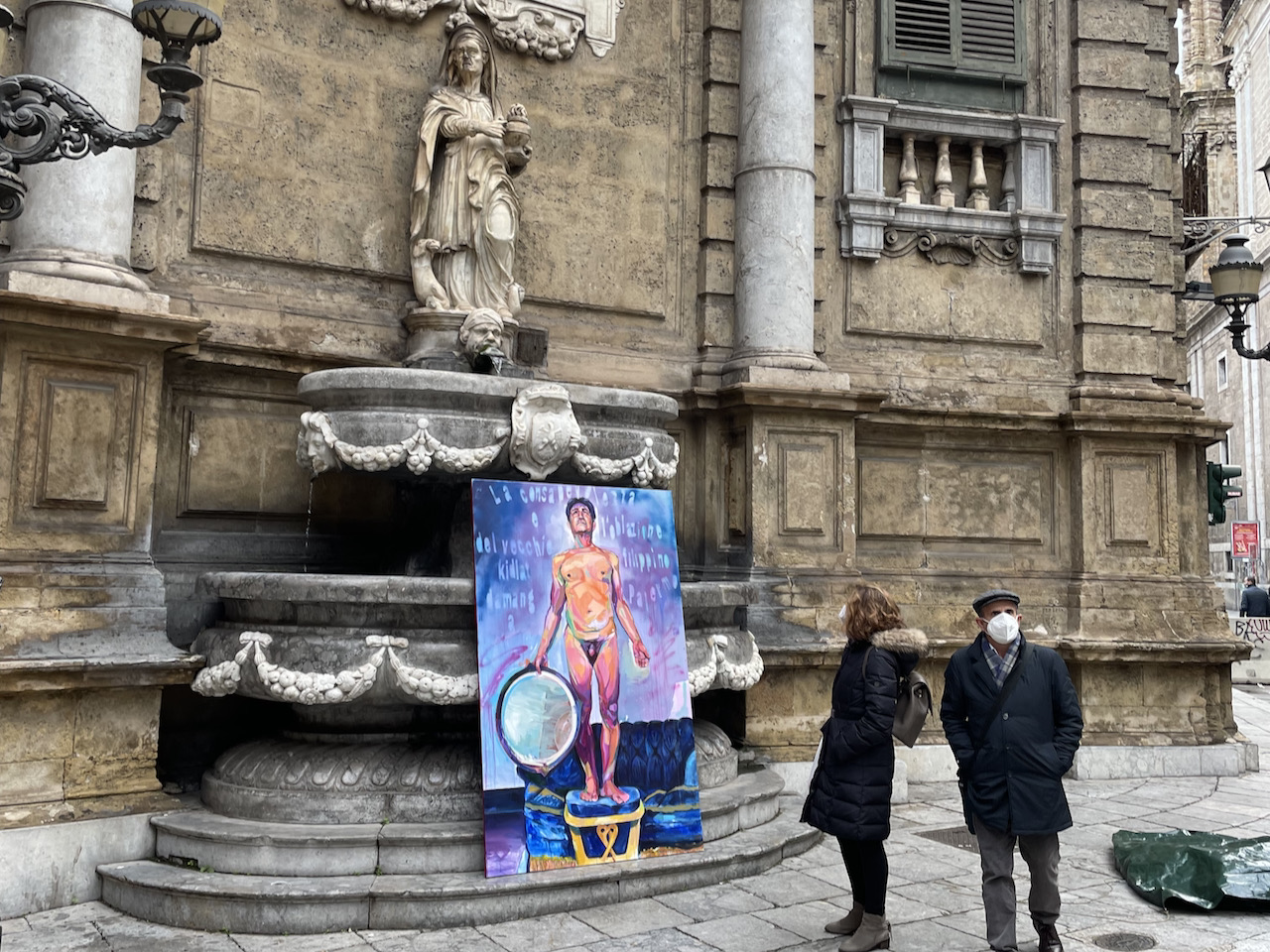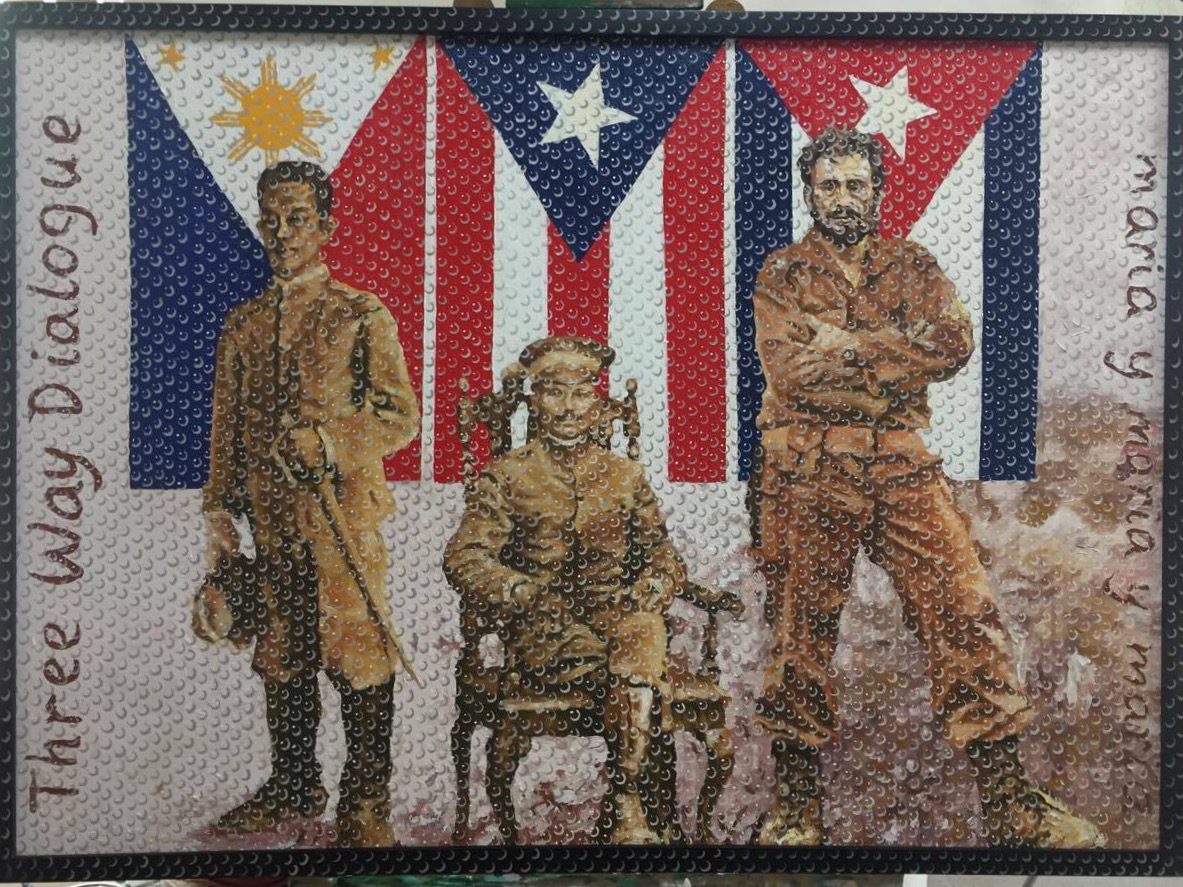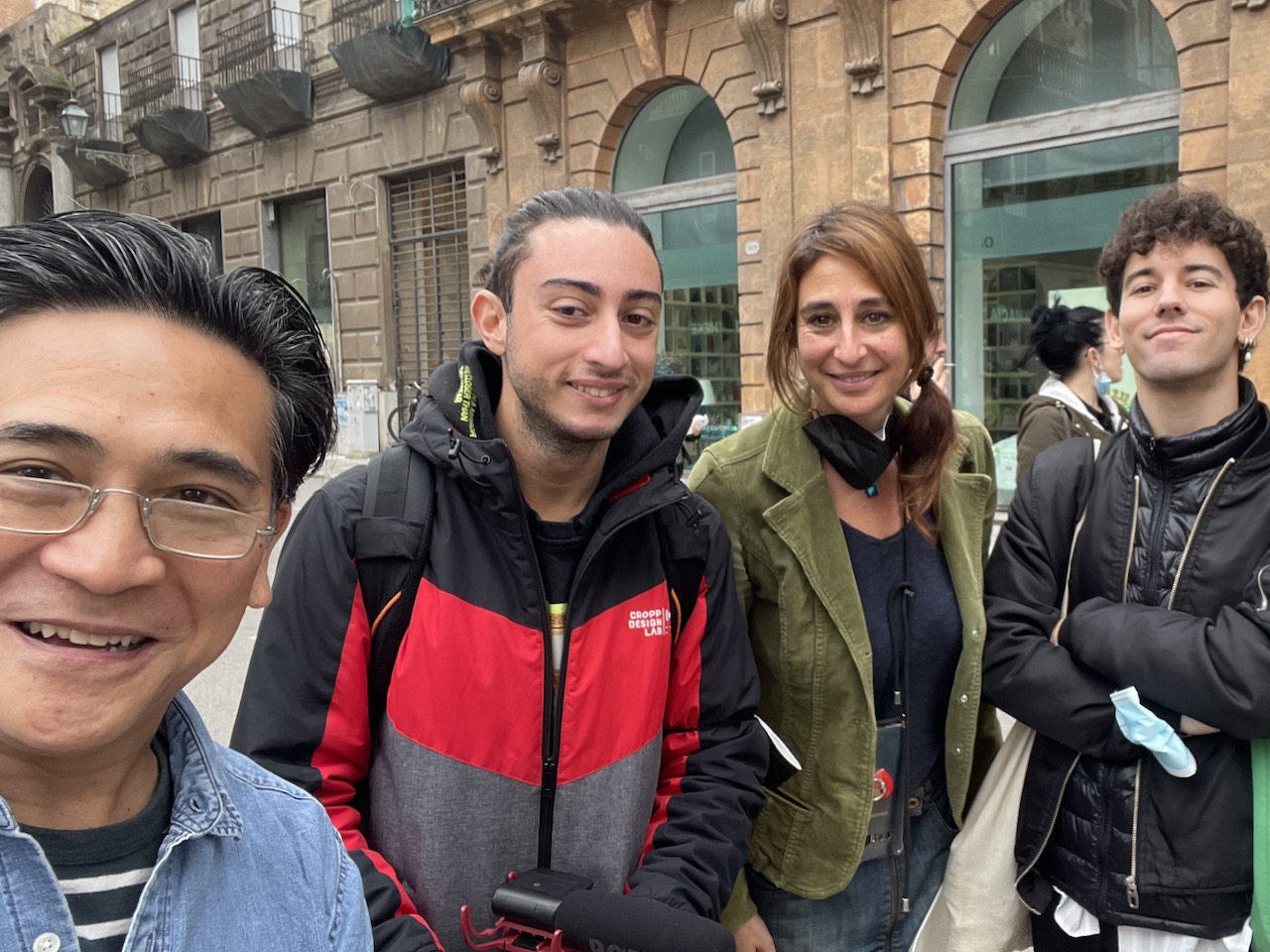contributed photos
La Consapevolezza is the artistic movement first inspired in Boston, Massachusetts in 1986 in a public-school classroom during the climactic, unfolding world news of the historic, bloodless “People Power Revolution” in the Philippines. (As I shared in a previous blog post, I am an American-born child of a Filipino father and a Chinese-Filipino mother, and I was raised in the Philippines between the ages of two and 12.)
The artistic movement crystalized in Palermo, Sicily as La Consapevolezza in the fall of 2021, during numerous planning sessions between painters Lydia Schembri and Ivan Suazo Perez, filmmaker Francesco diGiuseppe (who is creating a documentary on La Consapevolezza), and myself.
Today, the call and invitation to join the Consapevolezza is sent to all artists and creators across Connecticut and around the world.
La Consapevolezza, in Italian, means awareness. “The Awareness style” of this artistic movement embraces the experience of the colonized, conquered, occupied, subjugated, dominated and their progeny, who later live in freedom and independence, or who may for the time being still be in a “dependent” political territory.
The fundamental tenets of the Consapevolezza movement were centered initially on the concept of a “Three Way Dialogue” between and amongst artists, writers and creators from the Philippines, Cuba and Puerto Rico, and their American-oriented counterparts of Filipino-Americans, Cuban-Americans and mainland-centered Puerto Ricans.
It is a delayed 123-year American and world reaction to Spain’s literary paroxysm of grief and renewal over the loss of an empire. Previously, this had not been expressed in a conscious or recognizable artistic way by the last three large colonies lost by Spain at the end of the Spanish-American War of 1898: Philippines, Cuba, and Puerto Rico. The loss of these three countries rang the death knell for the Spanish empire, and concurrently ushered in the rise of the American military and economic hegemony throughout the 20th century.
Subsequent to the Spanish-American War of 1898 (aka “The Splendid Little War”) was the more brutal and inglorious Philippine-American War of 1899-1902. It lingered more than a decade later into 1913 and the eve of World War I, and continues until today to be an unrecognized war. It laid bare another loss and betrayal of America’s own fundamental values and promise to be independent, self-governing and democratic; with the Philippine-American War, the United States joined the club of European Colonial Powers.
Like Cuba, Puerto Rico and the Philippines (an archipelago), Sicily is an island that has lived with poignant cycles of conquest and occupation, then independence. The cycle has repeated over and over again throughout its history from the Hellenic and Roman times to the Islamic period, most recently by the United States and the Allied Forces in 1943. Again, I bring a personal interest in this history and perspective, as my wife’s maternal grandparents are from the heart of Sicily, the City of Caltanisetta.
I was fortunate to spend last autumn in Sicily, discussing the Consapevolezza with artists and imagining returning-to-Italy retirement scenarios for my family.
What I did not expect was to pose for one of the Consapevolezza paintings! It pretty much boiled down to a simple matter of the lack of the availability (and willingness) of any Asian male models in Palermo, or the entire island of Sicily for that matter. Halloween night, the two artists grabbed the first Filipino-Asian in sight, which was me. I thought, why not? At 65, I’m here in this aging and deteriorating-daily Asian body; too bad it didn’t happen in my 20’s or 30’s!
As we discussed what the pose should be, the painters – Lydia Schembri of Palermo and Ivan Suazo Perez of Sevilla, Spain – reflected about the famous statue in front of all the campuses of the University of the Philippines. These were sculpted by the Filipino National Artist, Guillermo Tolentino, and were called “the Oblation.” The two models employed by Tolentino originally posed in-the-nude for him, but when the first statue was unveiled and was about to be placed on its pedestal, the University president and board of directors ordered that some “leafy green matter” be placed over the genitalia, for Catholic modesty in the very-Catholic Philippines! In our case, on Halloween in Sicily, we went all-out just like Michelangelo’s David.
It was emotionally moving to pose. When I pondered why, I thought back to my art history courses in college and all my museum-going experiences and observations over the years. I do not recall any significant or iconic Asian art piece that focused or featured the Asian nude male or female figure in an ideal manner (except for some exaggerated, contorted and often just-ink prints of Asian – mostly Japanese – erotic art). This is unlike “Western” Art, where hundreds or even thousands of ancient Roman-Greco, Renaissance or modern work features “white” bodies.
The artistic works created for the Consapevolezza are generally characterized by the words “Consapevolezza” in their titles or are marked by a triangle that points in any angle around the letter C. The works are in the realms of painting, music, theater, sculpture, film/video, poetry, slam-poetry, performance art, dance, and other forms.
Please join the movement exploring the nuances and boundless possibilities of forgotten relationships, the inter- and intra-continental syncretistic experiences that await re-discovery and the “expressed awareness” of our shared humanity through the arts. Join for a day or a lifetime! All are welcomed.
Learn more about the Salcedos in Sicily at their family YouTube Channel
To reach Sylvester (aka Kidlat Damang) directly: salcedo1898@gmail.com






This is great! Congratulations!
I now understand the Sicily connection.